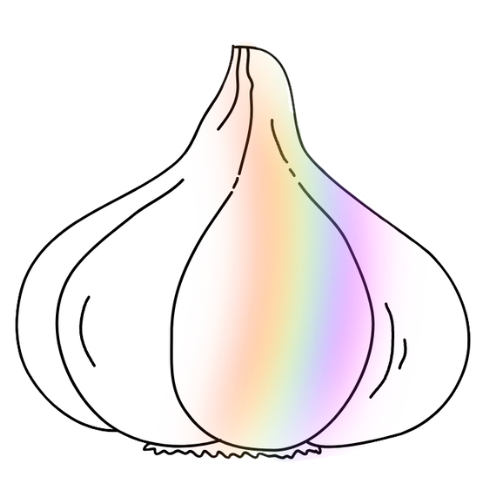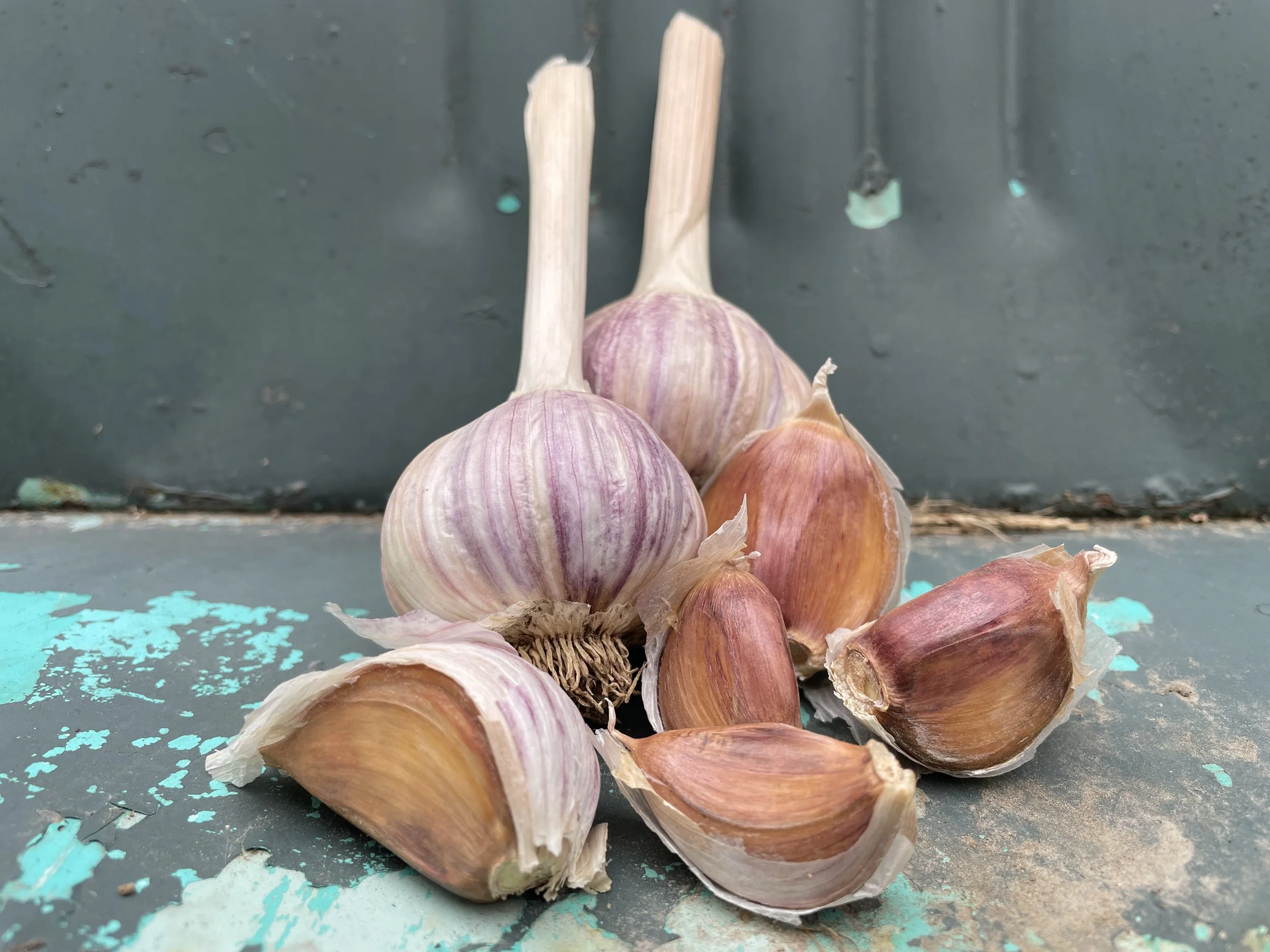Your garlic questions,
answered by garlic farmers.
What is garlic good for?
Can garlic lower blood pressure? Can garlic cure an h pylori infection? Are garlic pills good for you?
Garlic contains a powerful enzyme called allicin (pronounced “Allison”). When garlic’s flesh is sliced, diced, pressed or otherwise desecrated, a chemical reaction is catalyzed that releases this sulfuric enzyme. You can thank allicin for garlic’s spicy sting and that notorious kickin’ garlic breath!
Because of it's high allicin content, garlic has been scientifically linked to a variety of cardiovascular benefits for humans, including lowered blood pressure, a reduction of serum cholesterol, and atherosclerosis prevention. Garlic’s enzymes have also demonstrated significant anticarginogenic mechanisms that scavenge free radicals, regulate cell proliferation and inhibit the growth of tumors. It’s these same powerful antimicrobial enzymes that have made garlic a go-to support plant for combating infectious diseases for centuries. It has been demonstrated that garlic can differentiate between good gut flora and bad bacteria such as Salmonella, Escherichia coli (e coli) & h pylori! There is even evidence to indicate that garlic has a hypoglycemic affect, helping to regulate blood sugar.
PRO TIP: Mince garlic & let it sit for 10 mins before sautéing or pickling for maximum allicin release, flavor, & health benefits!
How does garlic grow?
What are garlic seeds? Can you plant grocery store garlic? When do you harvest garlic?
Garlic doesn’t need to make a flower or get pollinated to reproduce - it clones itself via its cloves! When a head, or bulb, of garlic is split apart into cloves, you’ll get garlic seeds! Hardneck varieties of garlic will create a florescence that produces bulbils (pictured) which are also tiny garlic clones. Planting bulbils will produce a full head of garlic after 2-3 years, but if you plant cloves in October it’ll go dormant over winter, putting energy into developing its strong flavor, and you’ll have full heads of garlic to harvest by July!
In colder climates, Hardneck varieties are the garlic of choice. Softneck varieties typically grow better in warmer climates. The garlic you buy at the grocery store is typically a softneck variety that is mass-produced in China or California. While the cloves from these bulbs will grow if you plant them, it is recommended that you source garlic from a local grower if you’re going to plant it. Not only will you support your local economy, but you’ll ensure that the garlic you grow is adapted to your microclimate. This is essential for success growing garlic!
In the Spring, green shoots, or leaves, pop up out of the ground, allowing the plant to photosynthesize and grow larger. Each leaf forms a sheath around the cloves, offering protection underground. In June, hardneck garlic grows a scape - a tough stem that gives this variety its name. Once the scape curls at the top, it can be cut for eating. We like to make pesto or pickled scapes. If a scape is left on the plant, it will develop a florescence, eventually prodcing bulbils (pictured above). You can eat those, too, for a powerful garlic punch.
Garlic is harvested in July. Dig it up with a farm fork and get it out of the sunlight as soon as possible. Garlic flesh is vulnerable at this time and can burn in the sun’s light. Garlic can be eaten fresh after harvest for a tender, powerful flavor. Allowing garlic to cure will ensure that the sheaths around each clove will dry fully & preserve the garlic for longer storage. Hardneck garlic can store for 3-6 months. Softneck varieties can last up to a year, but usually require a warmer climate to grow.
PRO TIP: Hardneck garlic varieties are closer to the original wild garlic plant, giving them a more complex flavor - chef’s choice!
Can garlic go bad?
How do you store garlic? How long will garlic last?
Hardneck garlic, like many beautiful works of art, is ephemeral. It lasts, on average, about 3 months. If stored properly, certain varieties can last up to 6 months! If you’re looking for longer storage capacity, softneck varieties are the way to go, lasting up to a year.








